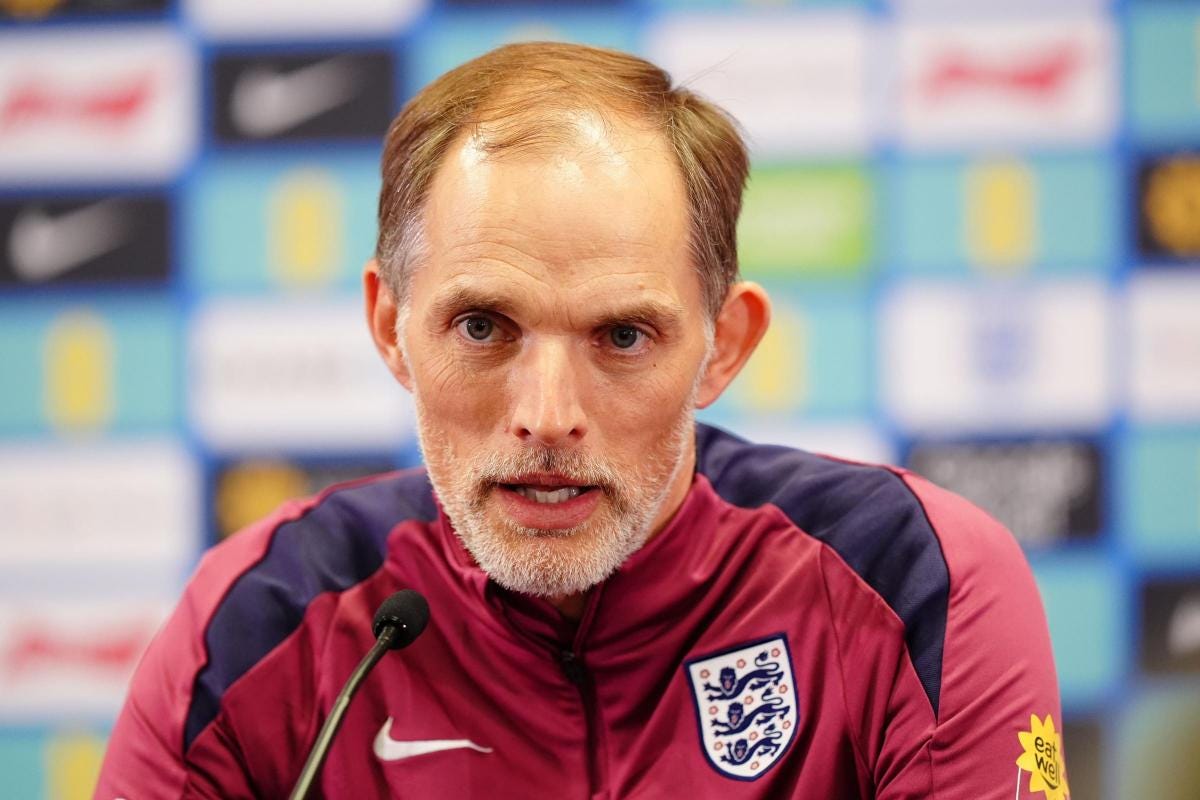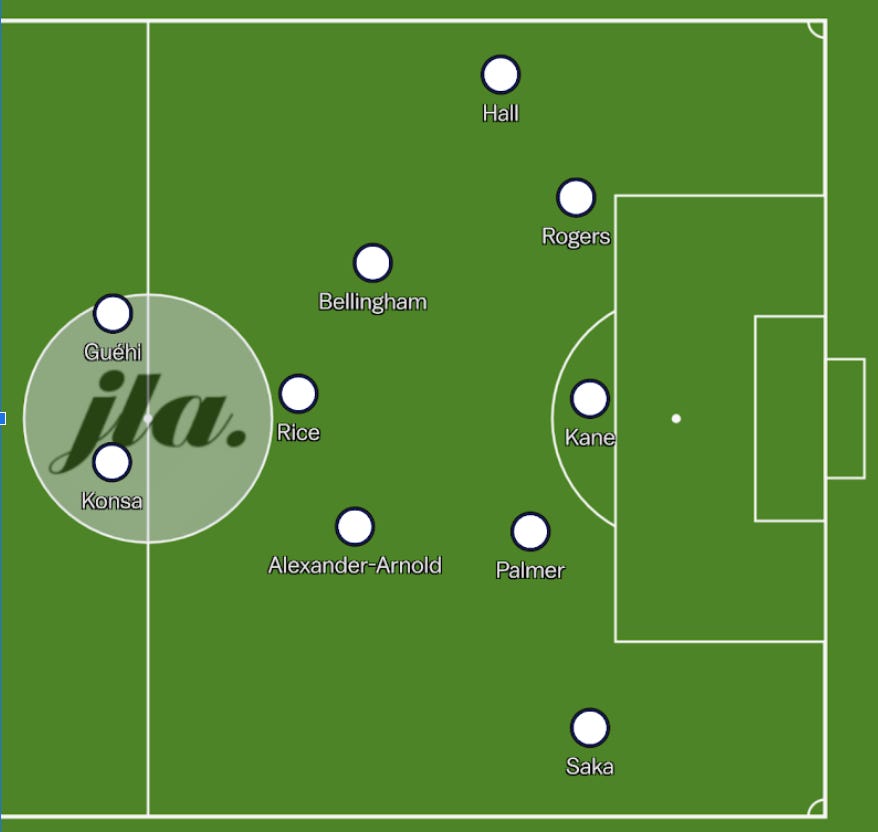Early Assessment Of Thomas Tuchel's World Cup Chances.
Should England fans be worried?
Since taking the reins of England’s most scrutinised job in January, Thomas Tuchel has faced mixed results – and mixed reviews to boot.
Now twelve months away from the World Cup that he has been employed to win, take a look at how the new boss has set his latest project up to bring football home next summer.
The Journey So Far
Despite occupying the Three Lions’ dugout for four games – winning three and losing one – it is difficult to gauge how successful Tuchel’s first six months have been. On one hand, performances have been underwhelming. England have been flat – in terms of energy, ideas and intensity – every time they have set foot on a pitch since January.
The matter is made increasingly complicated when considering the manner of opponents that England have faced this year. Tuchel’s first international break featured games against Albania and Latvia – both fixtures that, regardless of result, could do very little to ignite confidence among the always sceptical English fanbase.
It would have taken two free-flowing, electric performances to truly excite viewers, yet despite Albania and Latvia sitting 62 and 134 places behind England in the world rankings, both nations posed a different challenge from the ones Tuchel may face in the latter stages of next year’s World Cup: breaking down a low-block.
Both games produced memorable moments - Myles Lewis-Skelly’s first international goal and Reece James’ pinpoint free kick among them; but they couldn’t mask the reality that England had struggled to create high-quality chances.
The games against Andorra and Senegal were an opportunity for Tuchel to dispel any doubts over his capacity for the role. He had the chance to set up attacking, aggressive teams and produce exciting football.
Yet as anyone who managed to stay awake during the Andorra game would attest, that isn’t how things played out. When the Three Lions lost 3-1 to Senegal three days later, Tuchel didn’t sugarcoat his observations. In an interview with Talksport, he expressed his worry that “we lacked connections on the pitch, between the players in terms of distances and combinations with each other, but also in terms of communication and joy.”
He also admitted his frustration over the team’s difficulty to play with a high energy – citing that “we don’t see it enough on the international level.” At least Tuchel is aware of the enormous job on his hands.
On the other (and more optimistic) hand, Tuchel has used his time so far to assess 28 different players to gain an early understanding of how he might want his squad to look next summer.
We know from both Tuchel’s managerial past and recent interviews that he wants the Three Lions to play intelligent, front-footed football. And to do that, he will be reliant on many of England’s most established names.
In addition to this, by virtue of his experiments, Tuchel has also uncovered options with the potential to give England a new look: individuals such as Noni Madueke, Ezri Konsa, Curtis Jones and Myles Lewis-Skelly have all impressed thus far. Tuchel has also emphasised that they are not fringe players – referring to them instead as “competitors”.
None of these competitors have stood out quite like Morgan Rogers across his three appearances under Tuchel’s tenure. The German has always loved utilising players who are confident driving in possession. When asked about the substitutions he made in the Senegal game (Rogers, Jones, Bellingham and Morgan Gibbs-White), Tuchel was full of praise: “They made me directly connect with the team. Suddenly we go through gaps, we have courage, we show half-open body positions, we create chances. It was a completely different dynamic.”
Rogers’ elite physical profile – the perfect blend of pace and strength – has seen him stand out above anyone else for this kind of ball progression.
It is lessons such as these that Tuchel will be most proud of during his time at England so far. Not only do they give him a further understanding of what he may have at his disposal next summer – these findings could prove decisive. Don’t discount Rogers playing a major role in the Three Lions’ World Cup campaign.
England’s World Cup Plan
Tuchel has favoured a 4-2-3-1 formation so far with England, inverting one of the full-backs – either Curtis Jones or Myles Lewis-Skelly – and having the other push high and wide to form an aggressive 2-3-5 shape in possession. Yet as he is yet to face what would typically be considered a ‘major’ nation, it’s worth looking further to see how he could set up in a year’s time.
The 51-year-old has proven his adaptability over his managerial career, using different formations at each of Borussia Dortmund (4-3-3), Paris Saint-Germain (4-2-2-2), Chelsea (3-4-2-1) and Bayern (4-2-3-1), so it’s unlikely that England will have a set formation by the time the World Cup rolls around.
And that could be a good thing. As Tuchel is privileged enough to be picking players with such distinct skillsets, it may be that he wants his team to be able to adjust game-to-game. He said as much: “Modern football becomes so flexible. Managers adapt… to change yourself to give players a shorter distance into duels or to give the players a better coverage for counterattacks is not always a sign of weakness. It maybe helps you impose yourself.”
One thing that is likely to remain consistent is Tuchel’s desire for England to play out from the back, with the use of a flexible double pivot to encourage ball progression into the final third. This could take the form of Bellingham and Declan Rice, but some would argue that Bellingham’s talents are better utilised further forward.
Not everyone who is likely to feature in the World Cup squad has featured under Tuchel quite yet: Lewis Hall has been injured, and Tuchel made the choice to let both Tino Livramento and Adam Wharton “play their last U21 tournaments” ahead of asking them to “fight their way in” from September.
With so many talented players and various systems at Tuchel’s disposal, it’s difficult to predict what shape the Three Lions will settle on. But if the manager’s desire for front-footed football is anything to go by, the 2-3-5 in-possession structure pictured below could be a familiar sight by next June.
It’s not a conventional 2-3-5 either, but rather one designed to bring the best out of as many players as possible. Trent Alexander-Arnold would invert slightly into midfield, with the other full-back – likely to be Hall – offering width on the left.
Of the front five, only Bukayo Saka and Harry Kane should be considered ‘nailed on’ starters. England’s attacking depth could be a real strength next summer.
Despite operating mostly in the right half-space for Aston Villa last season, Rogers’ aforementioned profile lends itself well to any position across the frontline. His versatility could allow for clever rotations with Hall, Kane, Jude Bellingham, and Cole Palmer around him.
This lineup would be highly attacking, so it wouldn’t be a big surprise to see a more conservative midfielder – such as Conor Gallagher – starting in place of Rogers in ‘bigger’ games, which would give Bellingham the freedom to push forward.
Out of possession, the setup would, of course, look quite different. One trend currently almost universally accepted in elite football is a 4-4-2 structure without the ball, as it provides teams the defensive stability well-suited to preventing ball progression without requiring an aggressive press.
Using the same eleven as previously pictured, this is how a 4-4-2 shape would look: Palmer and Kane leading a press, with two banks of four behind them.
If one thing is clear, it’s that Tuchel is absolutely driven to ensure England have the best chance of bringing football home next summer, regardless of who they face. France’s latest wave of youngsters – Desire Doue chief among them – could pose the biggest threat. Or could it be Spain looking to build on their Euros success – or even Portugal having conquered the Nations League?
Regardless, Tuchel is arming his new nation with all the tools to go toe-to-toe with the big guns, perhaps in a way that Gareth Southgate never quite managed.








